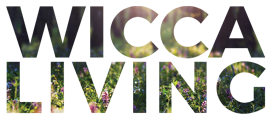When is Ostara: March 19-23
Ostara pronunciation: OH-star-ah
Themes: balance, renewal, action, beginnings, hope, new possibilities
Also known as: Alban Eiler, Rites of Spring, Eostra’s Day, Vernal Equinox, March Equinox, Spring Equinox, Lady Day, Bacchanalia
Ostara is the second of three spring festivals on the Wheel of the Year. Coming in between Imbolc and Beltane, this is a time for celebrating the balance between extremes that is found amid the seasons. Although it may still be chilly in many regions, this is the official beginning of Spring in the Northern Hemisphere—it is the Vernal (Spring) Equinox, the moment of exact balance between the light and the dark.
Though it’s typically celebrated on March 20, the exact moment of the Equinox varies from year to year. This is due to a slight misalignment between the Gregorian calendar and the actual rate of the Earth’s rotation around the Sun. The Equinox also occurs at differing local times, so depending on where you live, it may fall the day before or the day after the date listed on any given calendar. For this reason, a date range of March 19-21 is often cited in sources on the Wheel of the Year.
In the Wiccan mythology, the growing daylight is evidence of the God moving from infancy toward maturity. Likewise, the Earth becomes warmer and more fertile as the Goddess is coming into the full power of her Maiden aspect. The promise of greener, warmer, more bountiful times is becoming apparent as buds and blossoms emerge from the trees and shrubs, bees return to begin the pollination cycle, and fields of grass wake up from their winter slumber. This is a time of innocence and child-like wonder as the end of Winter finally becomes a reality and being outdoors is pleasant again. We have not yet arrived at the passion and heat of Summer, but are instead enjoying the more balanced energies of this Equinox.
To honor the energies of this time of year, you can decorate your altar with fresh flowers and a young, small potted plant or two. Use flower petals to mark the sacred circle, and fill your cauldron, if you have one, with fresh spring water to float petals upon. Images of hares, eggs and pastel colors are also traditional decorations. Foods appropriate for Ostara celebrations include eggs, sprouts, young greens, and other seasonal crops such as asparagus and fiddlehead ferns. Ostara rituals and spells often focus on balance. It is also not uncommon for Spring Equinox rituals to promote renewal.
As with Imbolc, this is a good time for purification of your home and even yourself—what habits or ruts have you still not shaken free from that you would like to let go of? This is also a good time to be planting seeds for what you’d like to manifest in the coming months—both literally, if you have a garden, and figuratively in terms of spellwork.
Before Christianity came to dominate the cultures of Europe, most pagans celebrated festivals on or near the Equinox, often honoring deities associated with fertility and abundance. One such deity was Ostara (also known as Eostre), a Northern European goddess of fertility who was worshipped in many areas populated by Germanic tribes. As part of the strategy to absorb and therefore eliminate the pagan religions, the Christians eventually adopted the name Easter for their own Spring holiday, and the Equinox festivals gradually declined over time.
However, as we know, the Old Religion never fully disappeared—just as with Yule, some traditions that are now associated with Easter actually have Pagan roots. For example, painting eggs was a custom among Druids and ancient Eastern European cultures, and the rabbit has always been a symbol of fertility. So if you grew up with these typical Easter customs, you’ve already tapped in to the power of Ostara!




